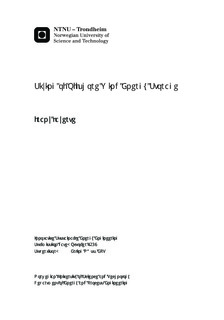| dc.description.abstract | Energy storage has the potential to provide a key benefit for intermittent energy sources such as offshore wind by providing a method to store excess energy to be used when the wind no longer blows. However, to date energy storage has always been a fairly cost prohibitive option, particularly in offshore environments where the technology has not even reached commercial status. To properly assess the potential of energy storage, this thesis proposes a MatLab cost optimisation model which determines the most cost effective sizing of an energy storage system to be used in a given situation. The key feature is flexibility and modularity, allowing a user to customise the scenario accurately but simply to provide a powerful and robust simulation capable of nearly limitless possibilities. As a result, a model is designed that is capable of accepting different modules that will define:
The primary power curve, such as the production from a wind farm
The demand curve of a selected consumer
The backup power production, which is a fuel-driven power production unit of choice
The energy storage system, which is chosen from a variety of different technology options
After a literature survey, subsea pumped hydro storage (PHS) and subsea compressed air energy storage (CAES) is thought to be the most interesting and feasible energy storage technologies to investigate, and are implemented into the model. Additonally, a normalised offshore wind farm power curve along with the demand curve of a offshore oil and gas platform are used for primary power and demand respectively, and simple cycle gas turbines are chosen as the backup power production system.
The results from the model suggest that the CAES is actually a competitive option in the current market, while the PHS will need drastic reductions in capital costing before it becomes viable. While the model yields interesting results, it is only as accurate as the cost data used, which is unfortunately bearing quite a large margin of error. Since there have been no actual commercial feasibility studies done on either of these technologies, we are relying on many assumptions and estimates as outlined in detail in the report.
Finally, discrepancies in the results suggest that the model has a major technical flaw and has difficulty on performing its optimisation with 100\% certainty. Simulations do not always find the global minimum as required, and sometimes they only find a local minimum. This becomes apparent during sensitivity analyses, and it is suggested that this problem could be alleviated with additional computational resources to run more thorough simulations, as well as using a Global Optimisation Toolbox that MatLab provides. | |

